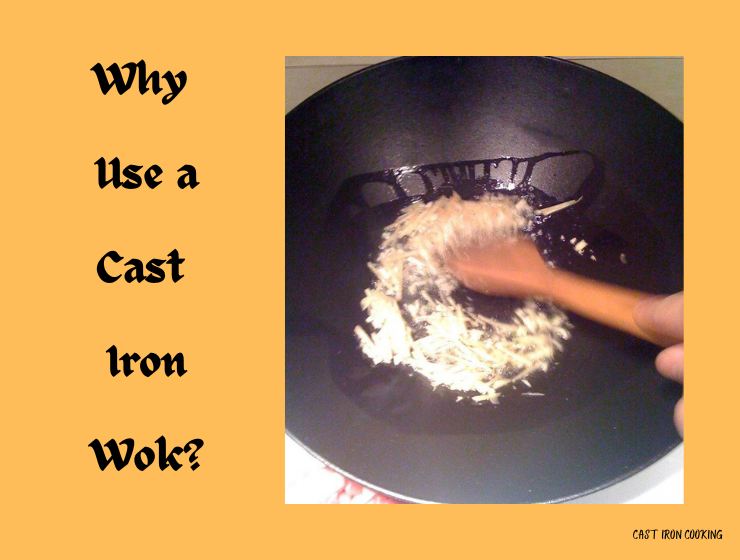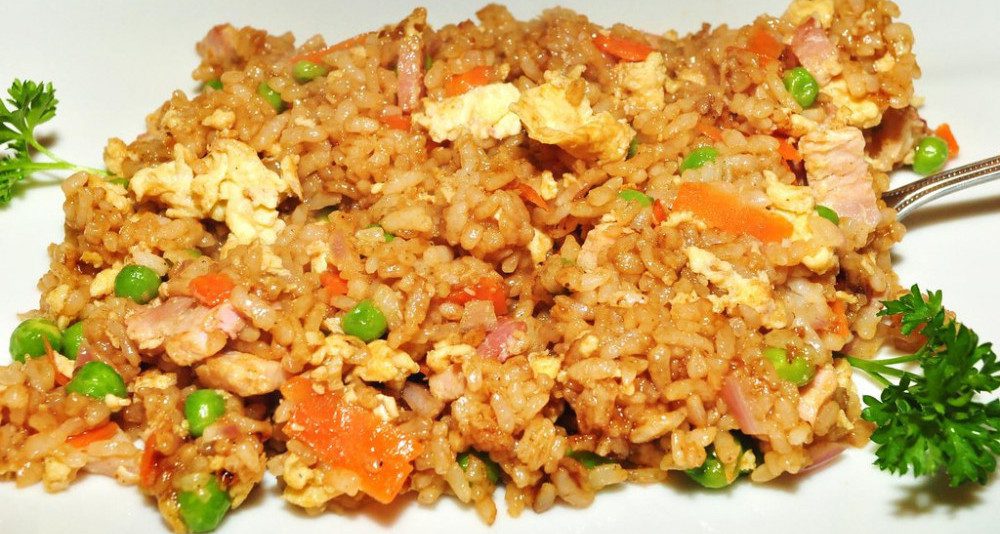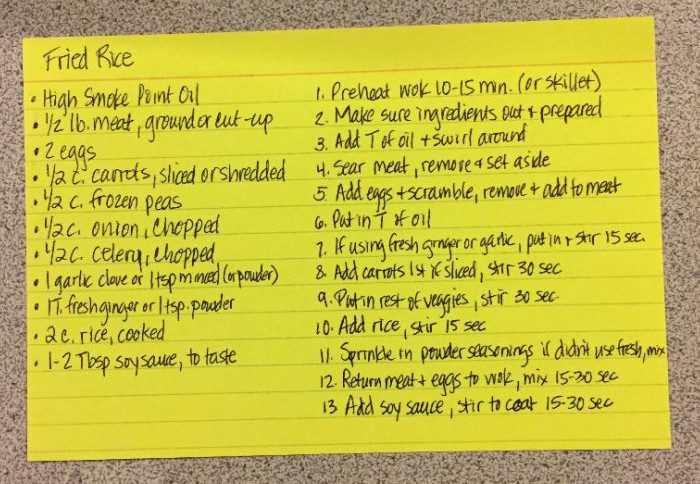Have you wondered why use a cast iron wok instead of a carbon steel one?
I mean, isn’t cast iron heavy?
And more difficult to maneuver?
At first glance, cast iron might seem like an illogical choice.
But allow me to explain what the advantages are.
Table of Contents
Why Use a Cast Iron Wok?
While the heaviness of a cast iron wok may seem like a disadvantage, that’s only partly true. The heaviness allows the wok to retain its heat, an essential feature for cooking in a wok. Traditionally, lighter weight woks are used over very high heat, which isn’t practical for modern stovetop cooking. Therefore a cast iron wok performs better in today’s home kitchen. However, its superior performance may not outweigh its heaviness for some people.
1. The Heat Retention of Cast Iron is Beneficial
The primary advantage of cast iron, in general, is its ability to retain heat.
This means it will take longer to heat up the pan, but once it’s sufficiently hot, it will stay hot.
And when you add ingredients, the temperature won’t drop near as much.
So, when your meal requires high-heat cooking, such as stir-fry, cast iron will do a much better job retaining the heat.
Since woks are used often in high heat cooking, it only makes sense that cast iron will perform better.
Plus, when you are cooking larger quantities, heat retention comes in handy.
RELATED > > > > > Why Does Cast Iron Make Food Taste Better? – 4 Factors to Consider
2. Cast Iron Woks Perform Better on the Average Stovetop
Traditionally, much of the cooking was done over an open fire. Even now, in restaurants, carbon steel works fine because their stoves and grills have the ability to kick out a much higher heat.
However, this isn’t the case in the home kitchen.
Using a cast iron wok performs even better on an electric stove that doesn’t put out as high heat and has no open flame.
As one person puts it in a Quora thread, “Heat capacity. There are two kinds of cast iron woks, the thick Western kind (Staub, Lodge, etc.) and the thin Chinese kind. The thick kind will hold a lot of heat, so you can get away with a wimpier stove. The thin kind seems to create better wok hee, but for that you do need a powerful heat source.
Home kitchens, by in large, have wimpier stoves.
Consequently, the thick Western kind of cast iron wok will perform better.
3. Disadvantages to Getting a Cast Iron Wok
Now you have heard the benefits of using a cast iron wok over a lighter carbon steel one (or even the thin Chinese kind).
But you might still be thinking about how heavy cast iron is.
What does a cast iron wok weigh anyway?
Of course, the weight will vary depending on the size you get.
Sizes range from 6.5 inches all the way up to eighteen inches, with the majority of cast iron woks falling somewhere in between.
For example, Lodge offers four sizes, and each one has a different weight:
- 6.5-inch weighs 1.73 lbs.
- 9 inch weighs 5.02 lbs.
- 14-inch weighs 10.8 lbs.
- 12-inch Chef Collection weighs 8.75 lbs.
Now, think about what lifting the wok of your choice as you are cooking will be like.
If it’s a small wok for a side dish or a single-serve dish, no problem.
But once you get to the 12 or 14-inch, the wok will be harder to maneuver.
So, as you can see, the heaviness of a cast iron wok can be a disadvantage as well as an advantage.
And for some people, this disadvantage outweighs any advantage in using a cast iron wok.
Should You Get a Cast Iron Wok?
Fried Rice Recipe
For this recipe, use leftover rice or make it separately. Have it ready before you begin cooking.
Additionally, have all your ingredients ready ahead of time.
Because, once you begin, stir-frying goes quickly, and you will spend most of your time stirring the ingredients. The cooking process will take about 8-10 minutes, depending on how long it takes the meat to cook.
Ingredients
- high smoke point oil
- 1/2 lb meat of your choice, ground or cut-up
- 2 eggs
- 1/2 c. carrots, sliced or shredded
- 1/2 c. frozen peas
- 1/2 c. onion, chopped
- 1/2 c. celery, chopped
- 1 garlic clove or 1 tsp minced (or powder)
- 1 Tbsp fresh ginger or 1 tsp powder
- 2 cups rice, cooked
- 1-2 Tbsp soy sauce, to taste
Directions
- Preheat wok 10-15 minutes (if you don’t have a wok, you can use a skillet)
- Make sure all ingredients are out and prepared by the time you start cooking
- Add about a tablespoon of oil and swirl around for a few seconds
- Sear the meat, remove and set aside, about 3-4 minutes
- Add the eggs and scramble, remove and set aside with meat, about 1 minute
- Put in another tablespoon of oil
- If using fresh ginger and garlic, add now, stir about 15 seconds
- Add the carrots first if using sliced because they take the longest to soften, stir about 30 seconds
- Now put in the rest of the vegetables, stir until softened, about 30 seconds
- Add the rice, stir and combine, about 15 seconds
- Sprinkle garlic and ginger powders if didn’t use fresh, mix
- Return the meat and eggs back to the wok, stir and mix together, about 15-30 seconds
- Add soy sauce, stir to coat, about 15-30 seconds
- Serve and enjoy
Final Thoughts
Unquestionably, a cast iron wok will do a better job for most people cooking at home in their kitchen.
But that doesn’t mean it is right for everyone.
So if you’re asking, “Why use a cast iron wok?” hopefully, you have a better idea if getting one is right for you.
Cast iron wok will retain the heat better and perform better than a thinner, lighter-weight wok in the typical home kitchen.
However, the heaviness of cast iron might be a deterrent.
In the end, only you can decide if using a cast iron wok will work best for you.
What do you think?
Would you use a cast iron wok?
You can let me know in the comments below.
And if you would like to know more about the Lodge 14-inch wok see my review.



You don’t need to convince me of the benefits of cooking with cast iron, since I grew up in a home where we used almost nothing else. I suppose I’m prejudiced, but I think food cooked in cast iron tastes better. I worry about using Teflon cookware, and try to avoid it.
Your points about weight considerations are important to me since I’m 70 now and there are times when health issues interfere with lifting heavy objects, such as my favorite cast iron cookware. Have you ever tried fresh corn fried in a cast iron skillet? My grandmother used to fix that with corn she grew in our garden, and, OH, how I miss it. She also used to fry corn fritters made with fresh corn, eggs, flour, salt and pepper.
I think the decline in cooking with cast iron started with concerns over germs and bacteria. I suppose if you don’t clean the cast iron properly, this could become an issue. But people cooked with cast iron for thousands of years and stayed healthier than modern humans. Fat was used as a preservative for hundreds, maybe thousands of years so perhaps we have allowed ourselves to become misled by slick marketers whose goal was to sell new cookware. Cast iron almost never wears out or breaks. It is so much more durable than other types of cookware that it would naturally reduce the income potential for manufacturers of alternative cookware products.
I loved your recipe, and if I get ambitious, I may try it. I know my husband would love it and thank you for suggesting it. I used to make a stir fry steak about once a week that the whole family loved. You cut thin strips of low far round steak and sear them in oil, then add quartered onions, bell peppers, and baby carrots. I can’t remember the exact ingredients of the spices I added. Seems like it was garlic powder or crushed garlic cloves, and a few other things, then the soy sauce was added last. We served it over white rice.
Happy cooking to you, and thanks for the article.
Hi Lilly, it’s nice to hear you are convinced of the benefits of cooking with cast iron. I used Teflon most of my adult years because that’s what my mom used and I didn’t know any better. But I definitely think cast iron is healthier than Teflon. You make a good point about people being healthy for thousands of years cooking in ci, but slick marketers came in and convinced us to buy new.
I have not tried fresh corn fried in cast iron or corn fritters, but both sound amazing. However, cornbread is very tasty made in ci. As well as stir fry.
Happy cooking to you as well.
I love cooking in cast iron. I have a deep dutch over that has been handed down from my parent we use to fry fish outside, as well as several seasoned frying pans inside. I love the fried rice receipe, thank you. Once I get recovered I plan to start cooking again and its a great fit into our receipes. I would love to get a wok, can you suggest a place with really good prices?
Hi Cathy! It’s great to hear that you like cast iron, and are blessed to have one handed down to you. I hope you recover completely and can start cooking again soon. I would suggest Lodge as a good place to get a cast iron wok. They are good quality and fairly reasonably priced. You can get them on the website, or Amazon is probably a bit cheaper. Depending on what size you want, they are priced from about $20 for the 9″ or $50 for the 14″ and the 12″ Chef Collection is closer to $70.